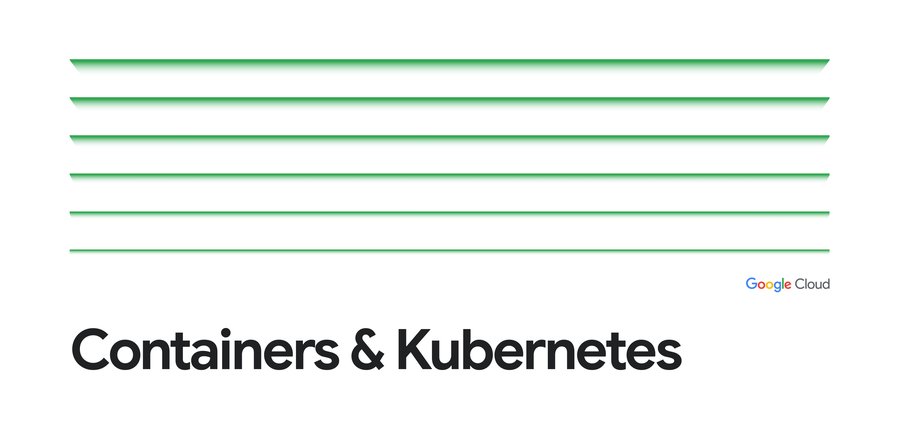Manage Kubernetes configuration at scale using the new GitOps observability dashboard
Divyansh Chaturvedi
Product Manager
Mathieu Benoit
DevRel Engineer
Try Google Cloud
Start building on Google Cloud with $300 in free credits and 20+ always free products.
Free trialAs a Platform Administrator or Operator, you've already been using Config Sync to sync your configurations — deployments, policy definitions, Helm charts, ConfigMaps, and more — consistently across many Kubernetes clusters. But with the excitement of solving one problem comes a new one: real time visibility on configuration syncs and failures across clusters. When operating at scale, your list of concerns grows longer: Has my configuration synced? Are my resources reconciling? Which of my configuration changes in the cluster is impacting end-user behavior? Today, we're introducing the Config Management Dashboard which can help you more easily find the answers to these questions and more.
The new Config Management Dashboard not only helps you quickly identify the configurations and differences between the desired and the actual state, but also keeps track of the clusters that run Config Sync. In this article, you'll learn more about the key components for this new dashboard and how it can help you solve your operational problems.
Key components
Dashboard: focuses on the overall status of all configurations and resources across one or multiple clusters. The dashboard also provides a quick view of the top concerns within a particular cluster or package.
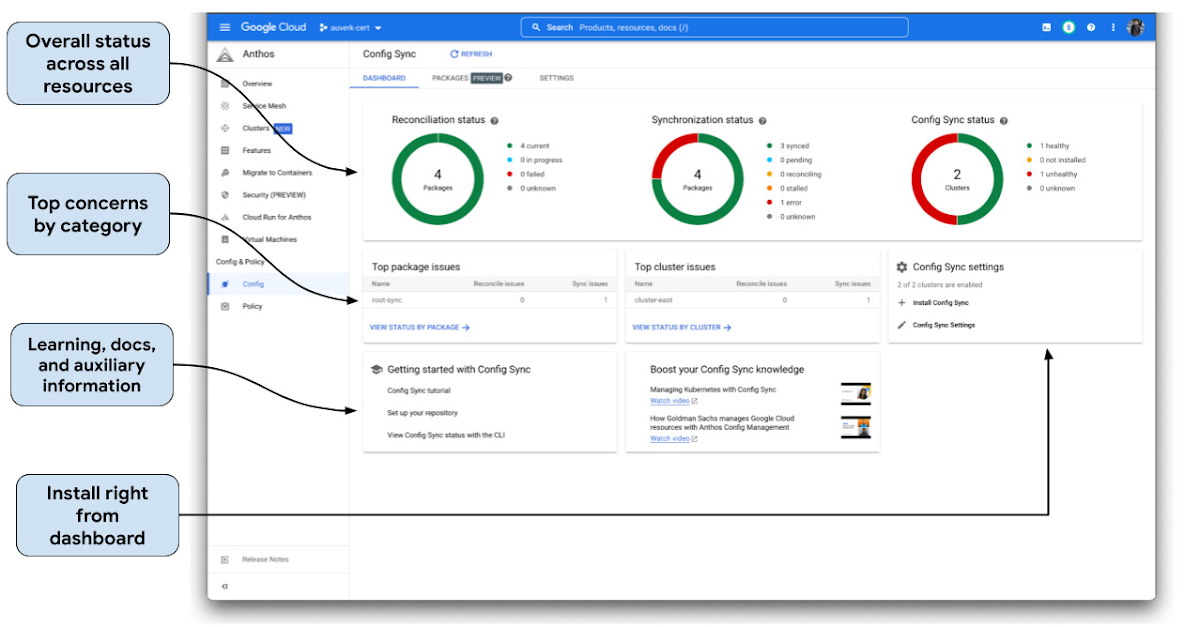

Packages: are Git repositories, Helm charts, and OCI registries that contain cluster configurations and resources that are synced across clusters. You can view synced resources and configurations, either by package or cluster. You can also filter your view by sync status, reconcile status, location, and clusters.
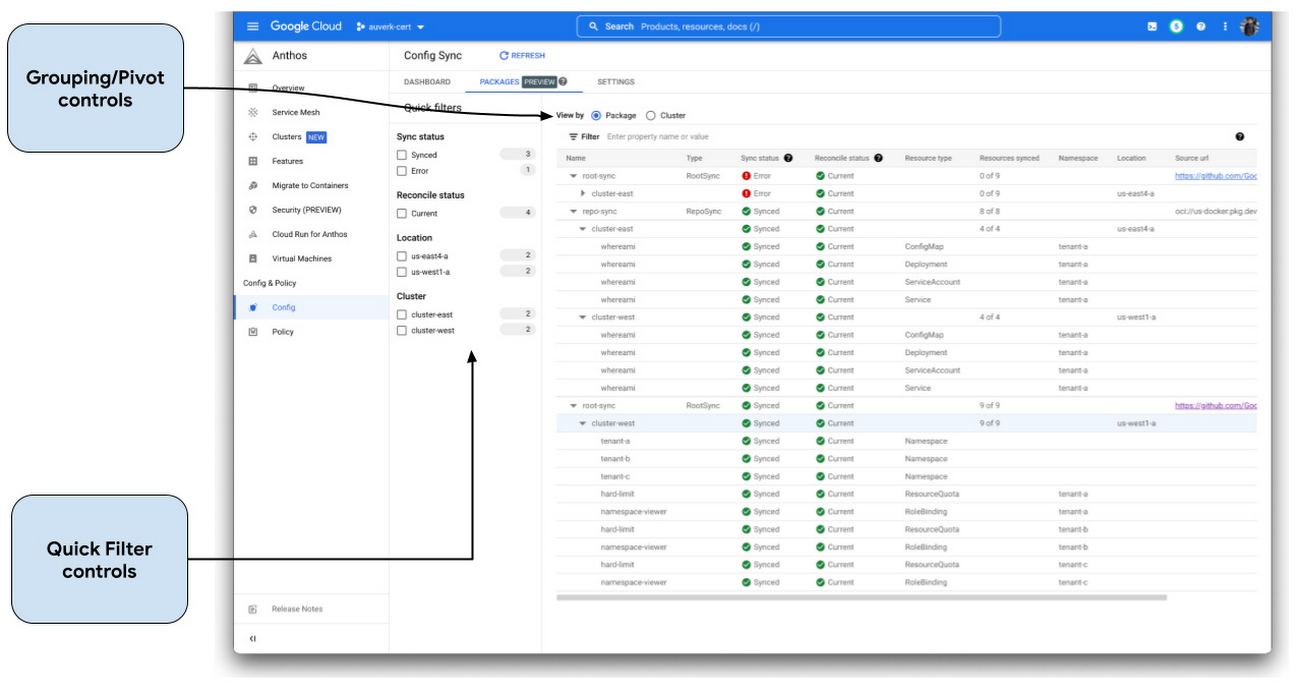

Common operations
The new Config Management Dashboard has been designed with common operations in mind that previously could only be done via CLI. Now you can:
Easily install Config Sync on one or multiple clusters from the dashboard and track install status on the Settings tab.
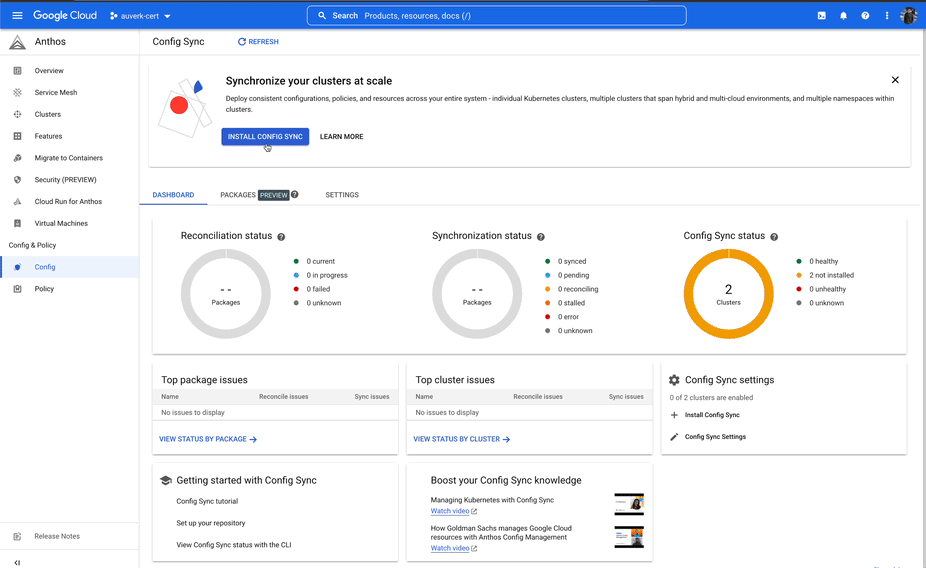

Quickly check the sync status and reconcile status of a particular configuration in a package across one or many clusters from the Packages tab with the help of quick filters. Sync status is the status of the latest sync from the packages such as Git repositories, Helm charts, or OCI registries. Reconcile status is the status of the configuration when deployed to the Kubernetes API by Config Sync.
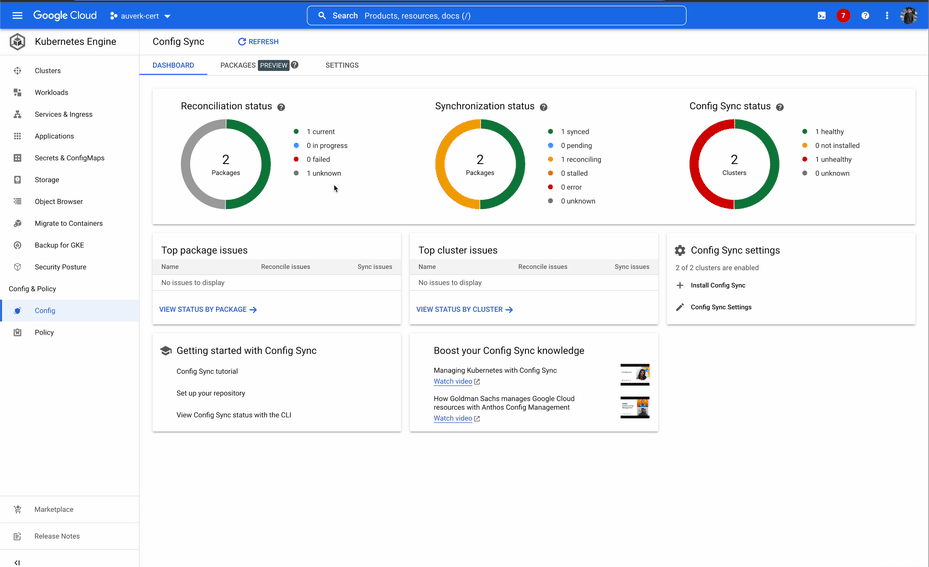

Filter issues and identify errors on any resource across clusters by viewing the error messages directly from the Packages tab. Now you can quickly see common errors such as configuration errors and synchronization errors right from the dashboard.
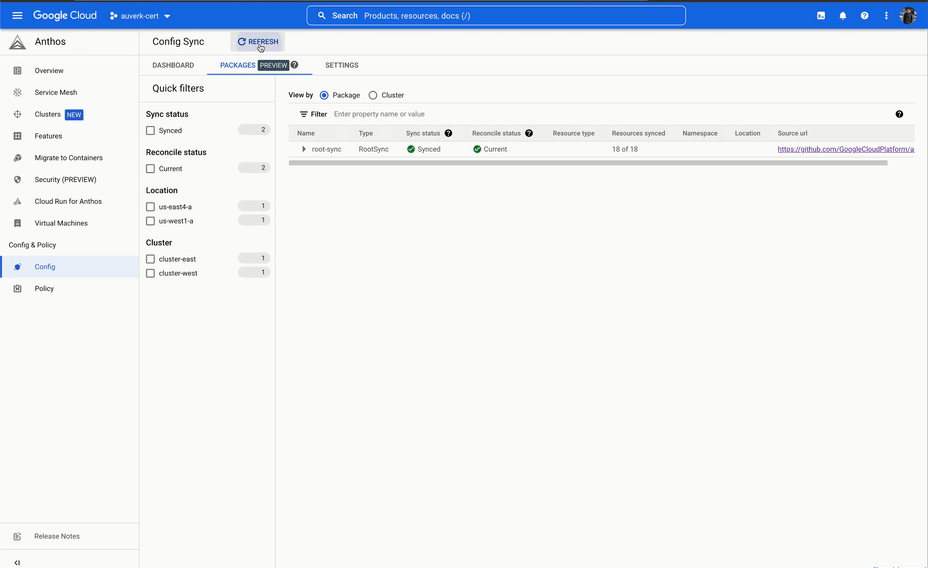

Glance over a real-time snapshot of the sync status and reconcile status of all the packages, along with overall Config Sync health across clusters right from the dashboard.
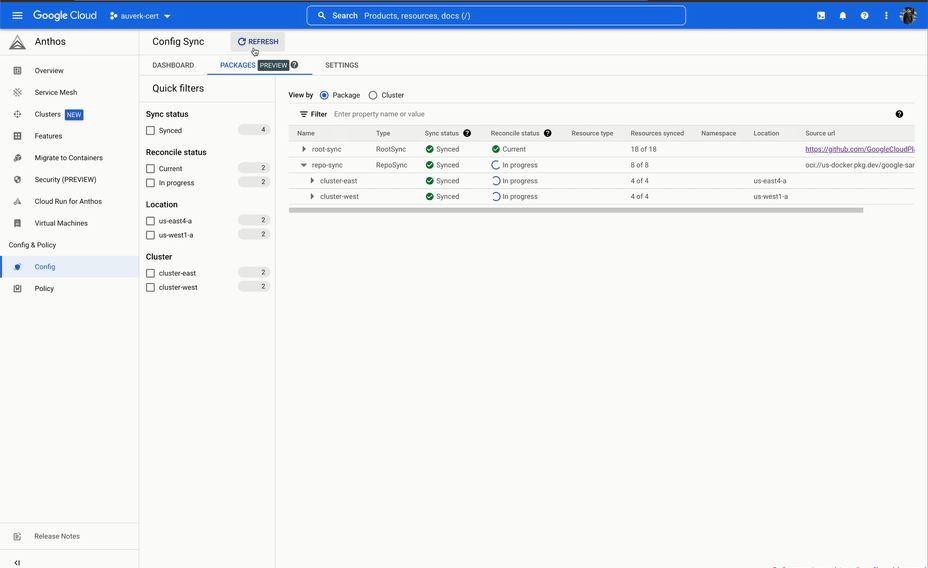

Summary
Config Management Dashboard will help you and your application teams with some of their critical daily tasks:
Review progress of configurations and resources across clusters confidently and ensure consistent cluster behavior.
Quickly identify issues and act accordingly so that value to end-users and service-level objectives (SLOs) are maintained.
Making a Config Management Dashboard that is easy to use and serves your needs is important for us and we plan to add important features to the Config Management Dashboard including package deployment, rollout management, and notifications in the future. So stay tuned and we welcome your feedback on the new Config Management Dashboard. You can reach us by clicking on the question icon on the top right corner in Cloud Console and choosing Send feedback.
